Hayat-e Barzakhiyah BY Hazrat Maulana Allah Yar Khan
حیات برزخیہ حضرت مولانا اللہ یارخانؒ
Hayat-e Barzakhiyah BY Hazrat Maulana Allah Yar Khan
| BOOK NAME | Hayat-e Barzakhiyah |
|---|---|
| BOOK AUTHOR | |
| BOOK PUBLISHER | Idara Silsila Naqshbandia Owaisiah |
| LANGUAGE | Urdu |
| FORMAT |
Related products
-
TAREEQ SILSILA E AALIYA QADRIA RASHIDIYA BY MUHAMMAD YOUNAS QADRI
TAREEQ SILSILA E AALIYA QADRIA RASHIDIYA BY MUHAMMAD YOUNAS QADRI
طریق سلسلہ عالیہ قادریہ مصنف محمد یونس قادری
You visit this website and buy books in PDF and Kindle at a very low price compared to Amazon and other bookshops. Let it be clear that this website is free for books. You buy books from this website and support our mission. Financial support. The purpose of this website is to unite libraries around the world and create a digital catalog of the books in them and make the rare manuscripts scanned and made available in PDF and Kindle format for the service of scholars.
Go ahead and support us in this mission.DOWNLOAD & ORDER
Contact on WhatsApp
-
-
Muhammad (S.A.W) BLESSING FOR MANKIND
Muhammad (S.A.W) BLESSING FOR MANKIND
BY: AFZALUR RAHMAN -
جامع المسانيد والسن الهادي لاقوم سنن
Jjamie almasanid walsunn alhadii li’aqum sunan PDFThis book is available in three formats (Kindle),(DOCX/DOC),PDF
PDF prize FreeDownload
DOCX/DOC Prize Not Available
Kindle Prize Not Available
Note: This prize is not definitive; it can be decreased or increased.
This book is not available for free, you can buy this book from Amazon and other bookshops for a low price.
To purchase the book, you can Contact US this or WhatsApp & FaceBook.CONTACT TO BUY
-
Durood Shareef ki Barkatain By Muhammad Younas
Durood Shareef ki Barkatain By Muhammad Younas
درود شریف کی برکتیں مصنف محمد یونس قادری
درود شریف کی فضیلت و اہمیت پر ایک ہام کتاب سلسلہ راشدیہ قادریہ کے شیخ محمد یونس قادری مد ظلہ العالی کے قلم سےشیخ محمد یونس قادری مدظلہ العالی کی دیگر کتب کو پڑھنے کے لئے یہاں کلک کریں
The purpose of the Toobaa Foundition is to serve the scholars, especially those specializing in MPhil, PhD, or any other field. The foundation assists them in their pursuit of knowledge. To achieve this goal, Toobaa Foundition has a program to digitize all libraries across the country, whether private or public. The primary objective is to search for libraries, compile lists, and introduce the available books. The foundation also conducts scanning of rare manuscripts and scans books that require digitization, presenting them in PDF and Kindle formats.
DOWNLOAD -
ABAQAT OF SHAH MUHAMMAD ISMAIL SHAHID
Abaqat (diffusions of Perfume) is the nearest source towards the understanding of the philosophy of Hazrat Shah waliullah Muhaddith dehlviرحمة الله عليه. The author has attempted successfully at explaining clearly some of the mystical and philosophical points which had been summarily mentioned by Hazrat Shah sahib رحمة الله عليه whom he considers as the “best of investigators ( Afdhal –ul- Muhaqqiqin)”.
He was deeply impressed by his two famous treatises ‘Lamahaat’ and ‘Sat’aat’ which cover two third of his field of philosophy.
In consequence, he prepared his ‘Abaqat’ which more or less is an elucidation of their substance. On the strength of these two works in particular, He has given preference to him over Shaikh Akbar Ibn ul Arabi رحمة الله عليه and Hazrat Imam Rabbani رحمة الله عليه.
Though Shah Shaheed رحمة الله عليه was not a mystic but at times, the mystical revelations were made to him. His discussions on the esoteric science in his book are an indication to the vast knowledge he possessed about mysticism, philosophy and the traditional literature. He had written this book in the form of a text with an intention to follow it with a commentary but he did not live to do so. This is the reason why it is difficult to understand certain points without elaboration.
The translator had before him two urdu translations of the ‘Abaqat’, the printed one by Hazrat Maulana Manazir Ahsan Geelani sahab رحمة الله عليه and the other in the shape of a manuscript once dictated by the late Maulana Ubaidullah sindhi sahab رحمة الله عليه in Mecca when he was in exile.
If these translations had not been there, it would have been impossible for him to undertake such a hard task. Though this English rendering may not be claimed as completely free from defects, but inspite of that it will be found interesting and instructive particularly for those persons inclined towards mysticism and philosophy.
“Abqat” is a renowned Islamic book written by Shah Ismail Shaheed, a prominent figure in the history of Islamic revivalism in South Asia during the 18th century. This book is considered one of his most significant works.
In “Abqat,” Shah Ismail Shaheed addresses various theological and religious issues. He advocated for a return to what he believed were the pure teachings of Islam and criticized what he saw as deviations and innovations in religious practices. His work played a significant role in the reformist and revivalist movements within Islam in the Indian subcontinent.
Shah Ismail Shaheed’s ideas and writings have had a lasting impact on Islamic thought in the region, and “Abqat” remains an important text for those interested in the history of Islamic reform movements. It is often studied and referenced by scholars and students of Islamic studies.
-
MUWATTA IMAM MALIK (English)
The Muwatta of Imam Malik, compiled during the early Abbasid period, is regarded by some scholars, including Shah Waliyullah, as the most authentic book on Ḥadith. The juristic verdicts in Muwatta’
reflect the practice of the Medinese and the consensus of the Medinese scholars.
After the demise of the Holy Prophet (may peace be upon him), many of his Companions settled in the conquered provinces. Some of their successors collected and codified Hadith. For example, Ibn Jariḥ
in Mecca, Awza’i in Syria, Hammad in Başrah, Haitham in Wasit, Ma’mar in the Yemen, Ibn Mubarak in Khurasan and Jarir b. Hamid in Rayy collected Hadith. But none of these collections could compare
with the Muwatta’ of Imam Malik, who passed his whole life in Medina and, therefore, had direct access to the most reliable authorities on Hadith, because most of the leading Companions of the Holy Prophet
(may peace be upon him) and their successors lived and died in Medina and narrated traditions from the Holy Prophet (may peace be upon him). The Muwatta’ of Imam Malik is based on the traditions narrated by them and the juristic verdicts given by them.
The word “Muwatta” literally means the trodden or beaten path. In his book, Musawwa, Shah Waliyullah says that “trodden path” or “beaten path” means the path followed by eminent religious
authorities. In other words, it means those verdicts which have been discussed by all religious scholars and about which there is complete agreement. According to Maulānā Sulaiman Nadvi, “Muwatta” means that trodden or beaten path which has been trodden upon by all the Companions of the Holy Prophet (may peace be upon him), or, in other words, it means the agreed practice of the Companions of the Holy Prophet (may peace be upon him).
Before Imam Malik finalised his book, the Muwaṭṭa’ contained about ten thousand traditions of the Holy Prophet (may peace be upon him), but since Imam Malik exercised great care in selecting Hadith (traditions), he omitted eight thousand traditions. In its final form, the Muwaṭṭa’ contains only about two thousand aḥadīth (traditions). Since the Muwatta’ deals only with such aḥādith as have a bearing on juristic verdicts, it omits many chapters and headings found in the Sahihs of Imam Bukhārī, Imam Muslim, Tirmidhi, and others.
Muwatta’ has been narrated from Imām Mālik in thirty different ways. Of these, sixteen are famous. Four narrations, those by Yaḥyā, Ibn Bukair, Abū Mus’ab and Ibn Wahb, are most authoritative, but Yahya’s narration surpasses them all in popularity and fame. Imam Malik’s jurisprudence (fiqh) produced lasting effects on the entire Muslim world. His disciples spread in all the provinces of the Muslim Empire. It is true that Imam Abu Hanifah’s disciples were scattered in the Hijäz, Persia and Transoxania, but they did not reach Africa and Spain. Imām Awzā’i’s fiqh (jurisprudence) won popularity in Spain, but it did not benefit the people of Iraq and Persia. On the other hand, Imam Malik’s disciples carried his juristic learning to all corners of the Muslim world.
The Muwaṭṭā’ of Imam Malik was compiled during the reign of Mansur, the second Abbasid Caliph. After he was installed as Caliph in 136 AH., Mansur made his first Pilgrimage to Mecca. He visited Medina where he was received by leading scholars and men of eminence. Sufyan Thawrī, Sulaiman Khwaṣṣ and Imam Malik also came to greet him. When Mansur saw Imam Malik, he addressed him saying: “I have become disgusted with the differences of the jurists on Islamic law in different regions of the Empire. There is nothing of juristic learning in Iraq. The Syrians are known for their ardent love for jihad There is little learning among them. All juristic knowledge and scholarship is centred in Hijaz and you are the leader of the scholars of Hijaz. I wish that your book, Muwaṭṭa’, may be kept in a prominent place in the Ka’bah, so that all the people should refer to it on juristic questions. I also wish that copies of the Muwaṭṭā’ may be circulated in all parts of the Empire so that all juristic verdicts may conform to it.” But Imam Malik expressed his disagreement with the opinion of Manşür. He said: “The Companions of the Holy Prophet (may peace be upon him) settled in all provinces of the Empire. Their juristic opinions and verdicts command respect and reverence of jurists in different regions of the Empire and the people of these regions follow their juristic opinions. Under these conditions, the people should not be forced to follow the opinions of a single jurist who is not infallible, after all, and may commit errors.”
Another incident of the same kind shows the sturdy independence of mind of Imam Malik and his refusal to submit to the wishes of the governmental authority. Although Manṣur was very kind to the Imām, the latter never recognised the legitimacy of his government. Once he issued a fatwa that the caliphate belongs rightfully to Nafs Zakiyyā, a descendant of the Holy Prophet (may peace be upon him). The people objected saying that they had sworn fealty to Manṣur. Imām Malik said: “Manṣur has coerced you into doing this and the Shari’ah does not regard as valid any act done under coercion. There is a hadith (tradition of the Holy Prophet) that if a man is forced to divorce his wife, the divorce would be invalid.” On hearing this, Ja’far, the Governor of Medina, asked the people to renew their oath of fealty to Mansur and ordered Imam Malik not to issue any fatwa declaring that a divorce obtained by force or under coercion is invalid as this would strengthen the case of those who regarded as invalid the
oath of fealty obtained by Manṣur under coercion. But Imam Malik refused to be browbeaten and continued to give his verdict against divorce under coercion. For this act of disobedience to the governmental authority, Imam Malik was flogged in public until he bled white, but still he refused to bow to the wishes of the rulers.
22 December 1979
(Prof) Mazheruddin Siddiiq
The Muwatta of Imam Malik holds significant importance in the Hadith tradition of Islamic studies for several reasons:
- Authenticity and Reliability: The Muwatta is considered one of the most authentic collections of Hadith in Imam Malik was known for his rigorous standards in selecting Hadith, and he only included those narrations that he believed met the criteria of authenticity. This makes Muwatta a trusted source of Hadith for scholars and students of Islamic studies.
- Early Compilation: Muwatta is one of the earliest Hadith compilations in Islamic history. Imam Malik compiled it during the 8th century, making it one of the foundational works in the development of Islamic jurisprudence (fiqh) and Hadith scholarship.
- Geographical Significance: Imam Malik was based in Medina, which is considered one of the holiest cities in Islam. His collection reflects the practices and traditions of the people of Medina during his time. This makes Muwatta particularly valuable for understanding the early Islamic community and its practices.
- Integration with Fiqh: Muwatta is unique among Hadith collections because it integrates Hadith with jurisprudential (fiqh) rulings. Imam Malik sought to provide practical guidance to jurists, judges, and the Muslim community as a whole by combining Hadith with legal rulings. This approach has had a lasting impact on the development of Islamic jurisprudence.
- Recognition by Islamic Scholars: Muwatta has been widely recognized and respected by scholars of different Islamic schools of thought. It is not limited to the followers of the Maliki school; scholars from other schools have also acknowledged its significance.
- Cultural and Historical Insight: Beyond its religious and legal importance, Muwatta provides valuable insights into the culture and society of early Islam. It contains Hadith related to various aspects of life, including social customs, ethics, and the behavior of the Prophet Muhammad, offering a holistic view of the time.
- Comparative Study: Scholars and researchers often use Muwatta as a basis for comparative studies of Hadith across different collections. Its unique compilation style and content make it a valuable resource for understanding how Hadith were transmitted and evaluated in the early Islamic period.
In summary, the Muwatta of Imam Malik is highly significant in the Hadith tradition of Islamic studies due to its authenticity, early compilation, geographical context, integration with fiqh, recognition by scholars, and its role in providing insights into early Islamic society and culture. It continues to be a vital source for scholars and students of Islam seeking to understand the Prophet’s traditions and the foundations of Islamic jurisprudence.
The English translation of the Muwatta of Imam Malik:
- Islamic Scholarship: Highlighting the translation’s role in advancing Islamic scholarship and knowledge.
- Hadith Tradition: Emphasizing the translation’s connection to the broader tradition of Hadith in Islam.
- Cross-Cultural Understanding: Signifying how the English translation promotes cross-cultural understanding by making Islamic texts accessible to English-speaking audiences.
- Religious Texts: Identifying the translation as a key religious text for Muslims and scholars of Islam.
- Historical Significance: Stressing the historical importance of translating this early Islamic work into English.
- Jurisprudence and Fiqh: Reflecting the translation’s relevance to the study of Islamic jurisprudence (fiqh).
- Medina’s Legacy: Highlighting the role of Medina’s historical legacy in shaping the Muwatta and its translation.
- Comparative Religion: Indicating how the translation aids in comparative religion studies, allowing scholars to compare Islamic traditions with other religious texts.
- Cultural Heritage: Recognizing the translation as part of the cultural and religious heritage of Islam.
- Interfaith Dialogue: Suggesting its role in promoting interfaith dialogue and understanding.
-
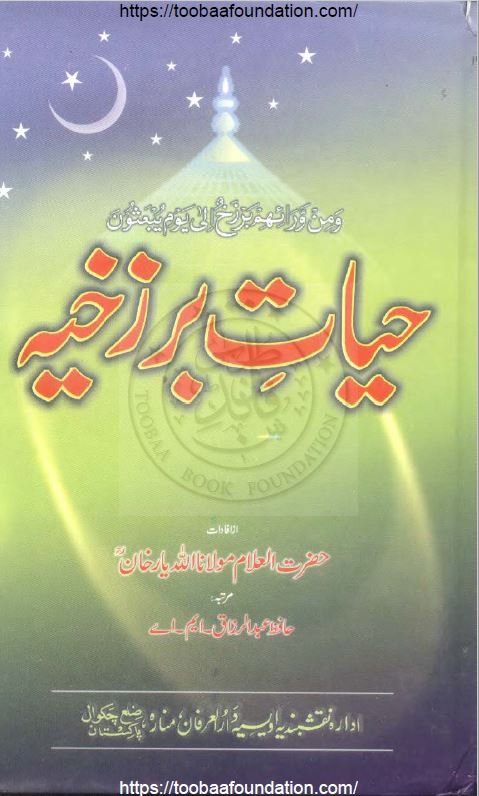
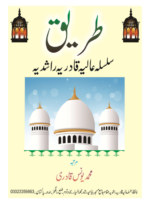
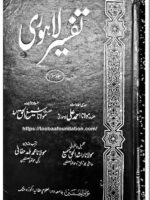

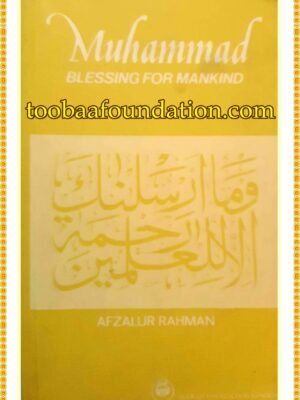
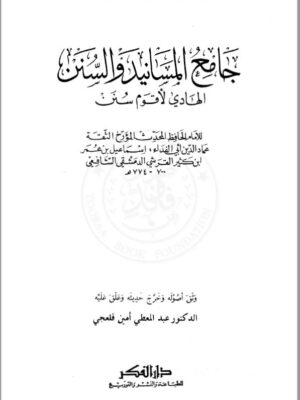
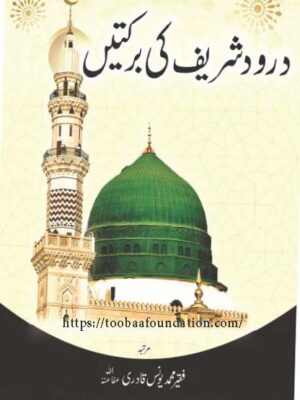


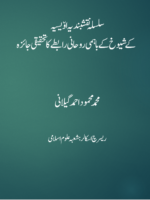
Be the first to review “Hayat-e Barzakhiyah BY Hazrat Maulana Allah Yar Khan
حیات برزخیہ حضرت مولانا اللہ یارخانؒ
”